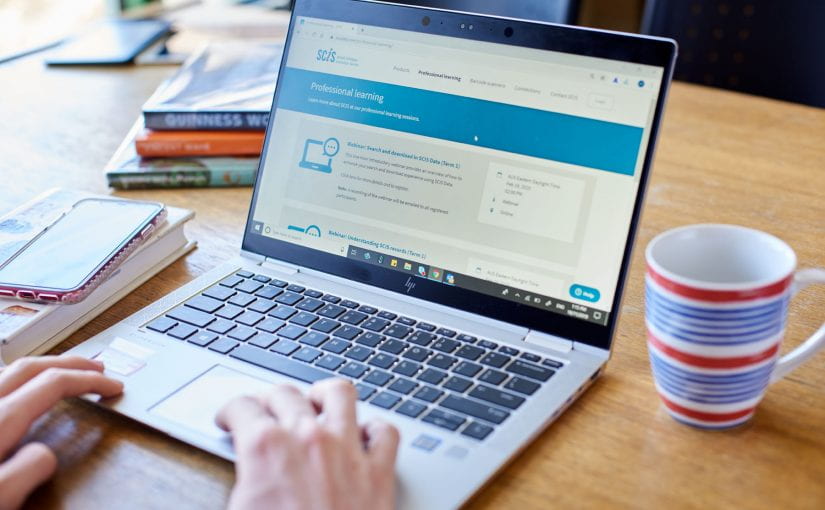Though SCIS is not a Library Management System (LMS), we spend most of our days curating and creating the data that is held in them. Thus, we have plenty of advice to offer on how to manage your data when moving it from an old LMS to a new one. Written by SCIS Sytems Coordinator Adam Styles, this article serves as a helpful guide on how to approach moving your data when migrating to a new LMS.
What is an LMS data migration?
A library management system (LMS) data migration is essentially the process of transferring your current core LMS information into a new LMS. This focuses on safely moving your bibliographic records, borrower records, statistical records and other relevant collection data into another platform.
It is important that core information is transferred to a new LMS in an ordered, methodical way to mitigate the chance of data loss.
What data is available to migrate? What should I migrate?
Any current library system will offer both standard and non-standard information that you can export, clean (quality control) and import into your new system. ‘Standard’ in this case implies industry standard data in all library systems, and ‘non-standard’ implies custom information in some but not all library systems.
Data that should be migrated to your new LMS includes:
- Bibliographic records (standard):
- This is your collection information in MARC21 (machine readable cataloguing) or another relevant library standard format or other relevant library formats, such as your collection items and associated subject headings.
- Borrower records (standard):
- This is your borrower information including borrower history, personal details and related.
- Statistical records (standard):
- These are the usage statistics of your bibliographic items. They allow reports to be run on most borrowed and least popular items, trending titles, and more.
- System policies, rules, profiles and metadata (standard):
- Lending rules and restrictions for borrower profiles.
- Current bibliographic collections or current staff access profiles (access and restrictions)
- Custom metadata not covered above but deemed valuable to keep (non-standard):
- Current reading lists that have been generated by library staff, teaching staff or students
- Collection tags that are used in user search tools to help discover collections
- User collection reviews such as book reviews or comments.
What formats will the data be migrated in? How do I export in these formats?
Bibliographic records formats will be available to migrate in:
- MARC21: A standard, machine readable format for bibliographic records in the library industry. This format allows you to transfer current library system bibliographic files into your new library system in a trusted format.
- Extensible Markup Language (XML): A human-readable and machine-readable file format (.xml).
Borrower records formats include:
- XML: See above description.
- Java Script Object Notation (JSON): This is commonly used for transmitting data in web applications and it is a very open universal compatible format.
- Comma Separated Values (CSV): A file format that separates information using commas. This is a very open universal compatible format.
If you have any non-standard data (as defined above) to migrate, this can be done using JSON or CSV.
What are the tasks to perform data migration?
Your library team will be responsible for completing the following tasks as part of the data migration.
- Export the required data from your current LMS
- Clean and quality control the exported data
- Import cleaned, quality-controlled data into new system
- Evaluate imported data in the new system while you still have access to your previous system
- Store backup versions of both the original exported data and the cleaned, quality-controlled in an offline environment
- Once all processes are in place, establish a time and date to stop using the old system and start using the new system.
What could my school be responsible for and what part might my new library vendor do for me?
Library vendor
Changing library systems may seem like a complex move, but your library system vendor may be available to give you support as you move to the new system. Your vendor will usually be able to:
- Provide support during the export from the existing system and help import data in to the new system.
- Provide support in the setup of system policies, rules and profiles.
Your school or team
This will vary greatly depending on the size of your school and your library team. Generally, your school library team will be responsible for:
- Identifying data to export from current system
- Planning and implementing the data export from your current system in the required formats (this may be your system support officer or IT department)
- Cleaning and quality control of exported data offline, ready to hand onto vendor for new system import formats (this maybe a system support officer or local IT department, if your school has these positions on staff)
- Backing up the original and cleaned exported data for long-term storage
- Reviewing and evaluating the current system data imported into new system, to ensure the information is correct and presented as expected.
Make sure you migrate your SCIS records, don’t re-download them!
A key thing to note is that you shouldn’t re-download SCIS records from our website into your new system. This is because you will have added data to the SCIS records on your old library management system during its lifetime, such as local spine labels (custom call numbers) and a variety of other small but meaningful changes. This data would not be present in freshly downloaded records from our website.
We recommend you export all bibliographic records and subject headings from your current library system and import them into your new library system to help avoid potential data loss.
Can data loss occur during migration?
Data loss is the unintended loss of information from a system or data set. Data loss can occur for many reasons, but is often caused by one of three key factors:
- Dirty data: Information that contains incorrect, invalid or duplicated items. For example, bibliographic records that contain error prone fields that might cause an error in a new system.
- Forgotten data: In some cases, you might fail to identify a set of information in your current system that you need in your new system. So, it is data you forgot to export from your old system which may no longer be available.
- Data format: The format that the data is imported or exported in, which might not carry in to the new system due to compatibility issues of the way the information is fed to the system. This can be trying to import a word doc of data where word docs will not carry in to a system.
How do I mitigate the chances of data loss during migration?
Losing data is a risk during a migration. If data is lost then a new library system may not work as you expect it to.
You can take the following steps to reduce the chances of data loss:
- Thoroughly review your existing system to ensure you have captured all of the data you need to carry into your new system. Check with your existing vendor to ensure you’re exporting all the required data.Export data in industry standard formats (vendor may recommend formats otherwise – see above).
- Quality control data that will be imported into your new system, by working with your vendor to check which formats are available or required.
- Evaluate imported data in your new system while the old system is still available.
- Ensure you create offline, long-term back-ups of both your original non-quality-controlled export from old system and the cleaned version of exported data.
How to get help from your library community?
Your library vendor is the best place to seek answers during your migration, as they will be familiar with the specific requirements for important choices such as data format and data quality control.
Further to this, LMS data migrations have been around since the very first library system was invented. There are many articles online that offer tutorials, tips and guides for many different library systems.
Lastly, remember that the SCIS customer service and technical team are here to help. We will do our best to work with you and any new vendor to get your SCIS records into their new home.
You can do it! Be bold, be courageous, ask questions and enjoy a well-deserved tea break every now and then.




